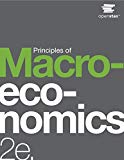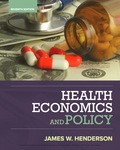
What is scarcity? Can you think of two causes of scarcity?
Definition of scarcity and its two causes.
Explanation of Solution
Scarcity is the basic economic problem and can also be considered as the fact of life. It is basically the gap between limitless human wants and limited available resources. Economic scarcity requires people to make decisions regarding the efficient utilization of resources, to satisfy their basic needs as possible.
Two major causes of scarcity:
1. Limited resources: All the resources including raw materials, land, tools, and labor are required to produce any type of goods or services, but they exist in limited supply only. This limitation is the basic economic problem that we face. Hence, we make trade-offs.
2. Limitless wants: Human wants can be considered virtually infinite, as we never get enough of what we want. It is the basic human nature that irrespective of the variety of goods and services we consume, we always want something else. And, this problem exists in all socioeconomic groups.
Hence, limited resources and limitless wants are the two basic causes of scarcity.
Importance of Economics:
Economics is the study defining how businesses, societies, households, governments, and individuals allocate their scarce resources. It is not just about money, but more about making choices and decisions such as business decisions, societal decisions, family decisions or individual decisions keeping scarcity in mind.
Hence, the valuable knowledge gained through economics helps in making well-informed decisions concerned with the optimal distribution of resources in society.
Want to see more full solutions like this?
Chapter 1 Solutions
Principles of Macroeconomics 2e
Additional Business Textbook Solutions
Horngren's Cost Accounting: A Managerial Emphasis (16th Edition)
Foundations Of Finance
Gitman: Principl Manageri Finance_15 (15th Edition) (What's New in Finance)
Engineering Economy (17th Edition)
Financial Accounting, Student Value Edition (5th Edition)
Horngren's Financial & Managerial Accounting, The Financial Chapters (Book & Access Card)
- In this question, you will test relative purchasing parity (PPP) using the data. Use yearly data from FRED website from 1971 to 2020: (i) The Canadian Dollars to U.S. Dollar Spot Exchange Rate (ER) (ii) Consumer price index for Canada (CAN_CPI), and (iii) Consumer price index for the US (US_CPI). Inflation is measured by the consumer price index (CPI). The relative PPP equation is: AE CAN$/US$ ECAN$/US$ = π CAN - πUS Submit the Excel sheet that you worked on. 1. First, compute the percentage change in the exchange rate (left-hand side of the equation). Caculate the variable for each year from 1972 to 2020 in Column E (named Change_ER) of the Excel sheet. For example, for 1972, compute E3: (B3-B2)/B2). ER1972 ER1971 ER 1971 (in Excel, the formula in cellarrow_forwardnot use ai pleasearrow_forward8. The current price of 3M stock is $87 per share. The previous dividend paid was $5.96, and the next dividend is $6.25, assuming a growth rate of 4.86% per year. What is the forward (next 12 months) dividend yield? Show at least two decimal places, as in x.xx% %arrow_forward
- Joy's Frozen Yogurt shops have enjoyed rapid growth in northeastern states in recent years. From the analysis of Joy's various outlets, it was found that the demand curve follows this pattern: Q=200-300P+1201 +657-250A +400A; where Q = number of cups served per week P = average price paid for each cup I = per capita income in the given market (thousands) Taverage outdoor temperature A competition's monthly advertising expenditures (thousands) = A; = Joy's own monthly advertising expenditures (thousands) One of the outlets has the following conditions: P = 1.50, I = 10, T = 60, A₁ = 15, A; = 10 1. Estimate the number of cups served per week by this outlet. Also determine the outlet's demand curve. 2. What would be the effect of a $5,000 increase in the competitor's advertising expenditure? Illustrate the effect on the outlet's demand curve. 3. What would Joy's advertising expenditure have to be to counteract this effect?arrow_forwardThe Compute Company store has been selling its special word processing software, Aceword, during the last 10 months. Monthly sales and the price for Aceword are shown in the following table. Also shown are the prices for a competitive software, Goodwrite, and estimates of monthly family income. Calculate the appropriate elasticities, keeping in mind that you can calculate an elasticity measure only when all other factors do not change (using Excel). For example, price elasticities, months 1-2. Month Price Aceword Quantity Aceword Family Income Price Goodwrite 1 $120 200 $4,000 $130 21 120 210 4,000 145 3 120 220 4,200 145 4 110 240 4,200 145 90 5 115 230 4,200 145 6 115 215 4,200 125 10 7899 115 220 4,400 125 105 230 4,400 125 105 235 4,600 125 105 220 4,600 115arrow_forwardGordon Dividend Growth Model I downloaded some data about 3M (ticker MMM). Company 3M Ticker MMM Dividends Per Share 2017 $4.70 2018 $5.44 2019 $5.76 2020 $5.88 2021 $5.92 2022 $5.96 4. The dividend payment in 2022 was $5.96 per share. Based on the five-year history, we see that dividends per share grew at a compound annual growth rate of 4.86% $5.96 (1/5) CAGR = $4.70 − 1 = (1.2681)0.20 − 1 = 1.0486 - 1 = 0.0486 = 4.86% - - What should be the 2023 dividend based on these values?arrow_forward
- 4. The data set BWGHT.DTA contains data on births to women in the United States. Two variables of interest are the dependent variable, infant birth weight in ounces (bwght), and an explanatory variable, average number of cigarettes the mother smoked per day during pregnancy (cigs). The following simple regression was estimated using data on n=1,388 births: bwght=119.77 - .514 cigs (i) What is the predicted birth weight when cigs = 0? What about when cigs=20 (one pack per day)? Comment on the difference. (ii) Does this simple regression necessarily capture a causal relationship between the child's birth weight and the mother's smoking habits? Explain. (iii) To predict a birth weight of 125 ounces, what would cigs have to be? Comment. (iv) The proportion of women in the sample who do not smoke while pregnant is about .85. Does this help reconcile your finding from part (iii)?arrow_forwardGiven the demand equation Q following table (using Excel): = 1,500 200P, calculate all the numbers necessary to fill in the Elasticity P Q Point Arc Total Revenue Revenue Marginal $7.00 6.50 6.00 5.50 5.00 4.50 4.00 3.50 3.00 2.50arrow_forwardSuppose a firm has the following demand equation: where Q = quantity demanded P = product price (in dollars) Q=1,000 3,000P + 10A A = advertising expenditure (in dollars) Assume for the following questions that P =3$ and A = $2,000. 1. Suppose the firm dropped the price to $2.50. Would this be beneficial? Explain. Illustrate your answer with the use of a demand schedule and demand curve. 2. Suppose the firm raised the price to $4.00 while increasing its advertising expenditure by $100. Would this be beneficial? Explain. Illustrate your answer with the use of a demand schedule and a demand curve. (Hint: First construct the schedule and the curve assuming A = $2,000. Then construct the new schedule and curve assuming A = $2,100.)arrow_forward
- ABC Sports, a store that sells various types of sports clothing and other sports items, is planning to introduce a new design of Arizona Diamondbacks' baseball caps. A consultant has estimated the demand curve to be where Q is cap sales and P is price. Q=2,000 100P 1. How many caps could ABC sell at $6 each? 2. How much would the price have to be to sell 1,800 caps? 3. Suppose ABC were to use the caps as a promotion. How many caps could ABC give away free? 4. At what price would no caps be sold? 5. Calculate the point price elasticity of demand at a price of $6.arrow_forward1. What are the basic information related to the BPO industry in the Philippines? 2. Top 15 BPO industries here in the Philippines. 3. Significance to certain economies. 4. What services are being outsourced?arrow_forwardSelect a real-world case situation relevant to credit analysis and lending in Guyana. Use this case which you either know about already or have identified through research and address the following questions in essay format: i. Outline and discuss what “triggered” the regulatory body to intervene? ii. How effective do you think the response was to such a crisis? iii. Outline and discuss two ways that could be used to strengthen the current regulatory environment?arrow_forward

 Economics (MindTap Course List)EconomicsISBN:9781337617383Author:Roger A. ArnoldPublisher:Cengage Learning
Economics (MindTap Course List)EconomicsISBN:9781337617383Author:Roger A. ArnoldPublisher:Cengage Learning

 Economics Today and Tomorrow, Student EditionEconomicsISBN:9780078747663Author:McGraw-HillPublisher:Glencoe/McGraw-Hill School Pub Co
Economics Today and Tomorrow, Student EditionEconomicsISBN:9780078747663Author:McGraw-HillPublisher:Glencoe/McGraw-Hill School Pub Co





